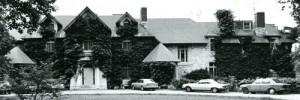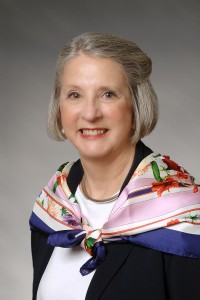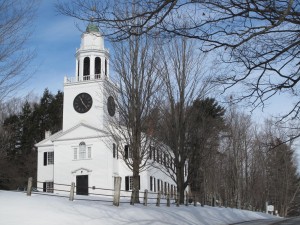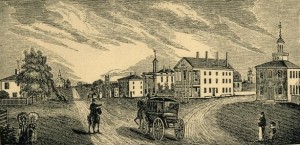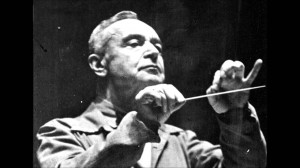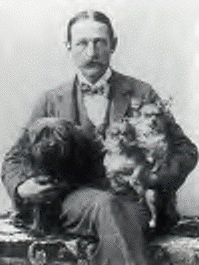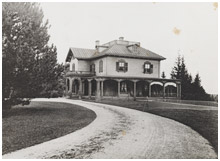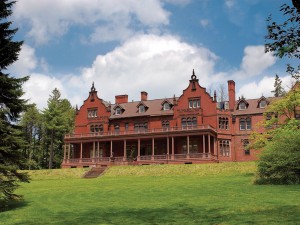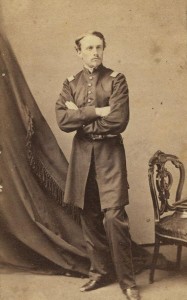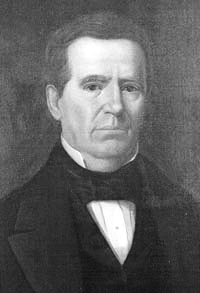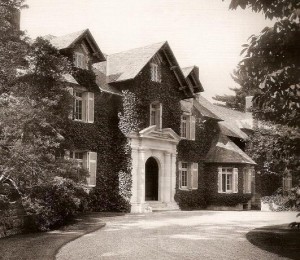
Grenville LIndall Winthrop built Groton Place in 1905 as a summer home. It encompassed the stone villa on this site from 1858 (The Elms). The new Carrera & Hastings designed building replaced the old with a classical, symmetrical order preferred by Winthrop. He had all Victorian features removed.
The formality of the design is an interesting contrast to the Carrere & Hastings designed Bellefontaine (now Canyon Ranch on Kemble Street). The Groton Place building is not only more formal but is set in a more recessive landscape. The building and landscape seem uniquely appropriate for the somewhat reclusive, 9th generation Winthrop owner.
Winthrop was highly involved in the design of the grounds. At his direction, a landscape was created that was very sculptural with massed shrubs, ornamental ponds, decorative out buildings and highly tailored hedges…..no flowers.

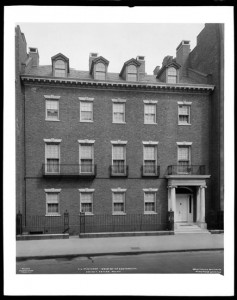
Reportedly, Winthrop’s favorite room was the wood- paneled library.The house was full of clocks and artworks. (1)
Winthrop was a discerning and extensive collector who, in addition to his Lenox summer home, moved, in the 1920’s, to a double house at 15 East 81st St. in New York to accommodate his collection.
In addition to the 150 acres he owned for his summer house, he bought large tracts near Bald Head Mountain to protect his views. He was said to employ 40 men to mow the lawns and to keep 500 peacocks and pheasants that roamed the property (2).
After Winthrop’s death in 1943, Groton Place was purchased by the Bondy’s to be the home of the Windsor Mountain School. Currently, the property is owned by Boston University and used as a summer music school and also for Berkshire Country Day classes.
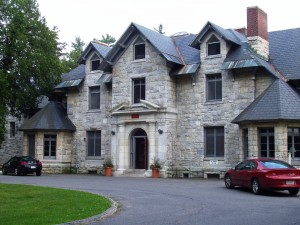
1. Houses of the Berkshires 1870-1930, by Richard S. Jackson Jr., and Cornelia Brooke Gilder, Acanthus Press, 2006, pps. 230-233
2. Harvard Magazine, “Unveiled – For the First Time, a Recluse’s Treasures Go Traveling,” by Christopher Reed, March-April 2003
